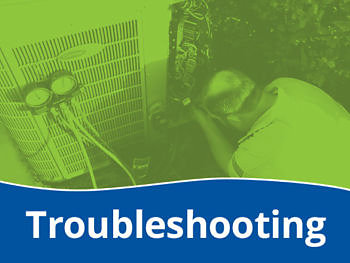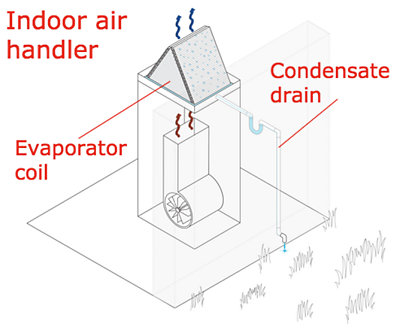3 Problems Caused By An Oversized Air Conditioner

September 20, 2018
Think your AC is oversized?
If your AC is too big for your home, you’ll notice at least one of the following 3 problems:
- Your air conditioner turns on and off right away
- Your AC is not removing humidity
- You have higher energy bills
In this article, we’ll go into more detail about each of these problems and how to fix them.
Let’s start with problem #1…
Problem #1: Your AC turns on and off right away
Does your AC cool your home in 10 minutes or less on a hot afternoon?
If so, that may indicate you have an oversized air conditioner.
Since an oversized AC is too powerful for your home, it will quickly cool your home then shut off, which can raise your energy bills and wear out your AC (from all the starts and stops).
Problem #2: Your air conditioner is not removing humidity
One of the purposes of your AC system is to remove humidity from your home’s air, which is important in those Florida summers.

Your evaporator coil (located in the indoor air handler) removes moisture from warm, humid air. Then that moisture exits your home via the condensate drain.
Learn more about how an AC dehumidifies your home in this article: “Why Is My Home So Humid?” [FAQ].
A correctly sized AC should have indoor humidity levels around 30–50%. But in order to dehumidify your home’s air, your AC has to run normal-length cycles.
Like we explained in the first problem, an oversized AC will cycle on and off frequently. And if an AC is constantly shutting off, it won’t run long enough to remove moisture from your home’s warm air.
So, if your home feels really humid, that could mean your AC is oversized.
Problem #3: You have higher energy bills
Like we mentioned in the first problem, an oversized AC will often cool your home really fast then shut off.
Not only does that wear out your AC components, but it can raise your energy bills too.
You see, your AC has several motors that run different components (like the compressor and blower). And all of these motors draw in more power when they start up compared to when they’re running. So if your AC is turning on and off frequently, the motors in your AC are using more power than they should, which is raising your energy bills.
So, if you’ve noticed steadily increasing energy bills, you may have an oversized air conditioner.
“Why is my AC oversized?”
Wondering how you got into this predicament?
Well, long story short, it’s probably because the tech who installed your AC didn’t do a “cooling load calculation.”
A cooling load calculation takes into account factors like:
- The square footage of your home
- The number of rooms in your home
- The number of windows and doors in your home
- The climate you live in
- The insulation levels in your home
- The condition of your home’s ductwork (i.e. does it have leaks?)
- And much more
Learn more about cooling load calculations by reading our article, “What Size Central AC Do I Need for My Home?”
A tech can only accurately recommend an AC size for your home by taking into account all of the factors above. But unfortunately, many HVAC techs either don’t know how to do a cooling load calculation or they just skip it when installing a new AC.
Why would a tech skip a cooling load calculation?
Well, imagine your old AC is 3 tons. The tech may assume that you should just replace the 3-ton AC with a new 3-ton system.
But what if the old 3-ton unit was already too large for your home? Then you’re just replacing an oversized unit with another oversized unit—which means you’ll continue having the same problems.
“What’s the solution for an oversized air conditioner?”
Contact a professional AC contractor to inspect your AC and perform a cooling load calculation. Only then will you know if your current AC is oversized.
Cool Today has locations in Tampa, Sarasota, Dunedin, Orlando, Naples and serves communities throughout Florida.
Posted in: Troubleshooting